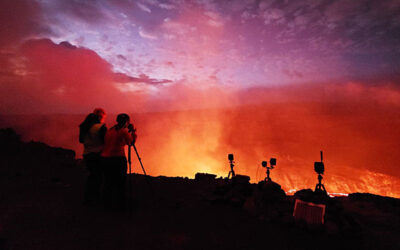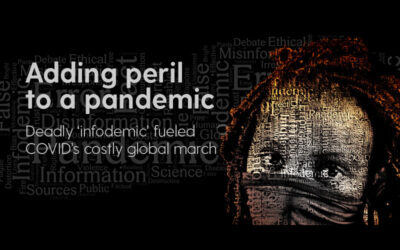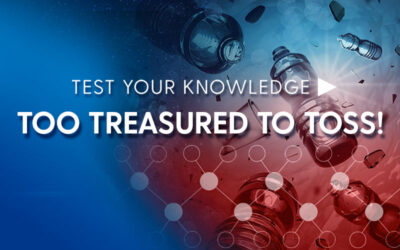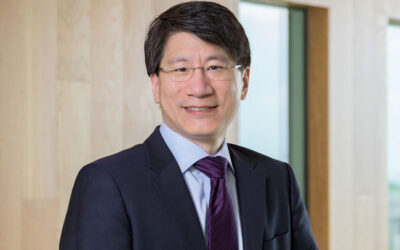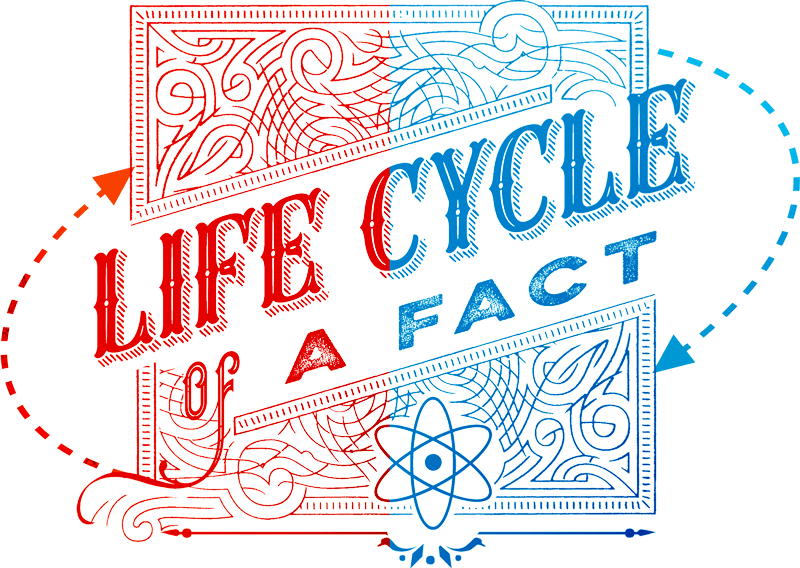

At some point in history — and not all that long ago — we did not know what in the world we were made of. We did not know anything about genes or cells or microbes or what made them all fit together.
We may have known the knee bone was connected to the thigh bone, but we didn’t know anything about the ligaments that shored up those connections, how all of that mattered to our muscles or why some old men had a lot more trouble walking than their grandchildren did.
For a long time, we didn’t know anything about bacteria or viruses either. We had no idea that they could threaten our lives, and we did not know that we could avoid the diseases they brought.
Scientists have taught us a lot about these things, often working for years to answer a single question to help us understand how things work and how they could work better.
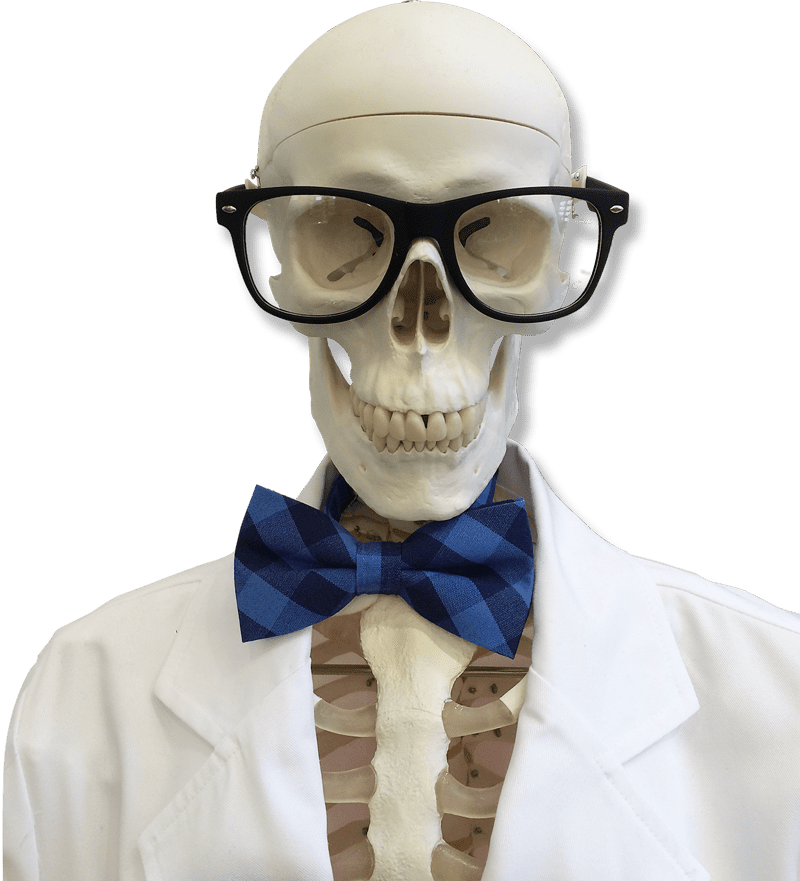
“When I teach biochemistry, I often challenge my students to think about the people who made the facts in their textbooks possible,” said Catherine Leimkuhler Grimes, professor of chemistry and biochemistry at the University of Delaware.
“People. Real people made these facts possible, probably dedicating much of their research careers to discover these things. However, as we go through time, those facts can be added to and the plot can thicken and/or change.”

The Scientific Method
The life cycle of a fact hinges on what is known as the “scientific method.” An idea is presented, tested and proven — or not. New ideas emerge, become more powerful, take on nuance and produce more insight. Some ideas are shown to be flawed. Some of the flaws are fatal.
Facts are born after this hard labor. What was once an idea has turned out to be solid, persistent and trustworthy in the face of rigorous scrutiny.
Scientists start with something familiar, something we already know and agree on. For example, we all can agree that if you are standing on Planet Earth and drop a brick, it will fall quickly toward your foot. It will not shoot up toward your nose. We call the law that governs that “gravity.” That’s how it is on our planet. Things don’t work the same way for astronauts when they are out in space, though, and we had to learn that, too. Context matters.
The scientific method of pursuing answers goes something like this:
- You have a question: What happens if I let go of this brick?
- You have an educated guess: I think it will hit my foot.
- You plan a way to test your idea, taking careful notes. You write down the time of day, the weight of the brick (is it concrete or plastic?), the air temperature, the humidity, the wind speed — anything that might affect what happens to a brick when you let go of it.
- You pick up the brick and let it go.
- You holler in pain, write down what happened and try it again. Yowch! Again. Yowww!
- You tell five friends about your idea and ask them to test it, giving them a list of all the steps you took.
- Your friends agree to test the idea using the same method. They let go of the brick, write down what happens and limp back to you with a (possibly harsh) critique of your idea and your method of testing it.
Those extra tests are important. Explaining how you reached your conclusion is the kind of transparency that leads to credibility. Listening to critics, evaluating results and learning from mistakes are important guardrails against error-riddled conclusions and fraud.

For a while, back in the Middle Ages, some people thought you could turn any kind of metal into gold. They dreamed up many kinds of methods and made wild claims, but they kept their work — which was called “alchemy” — secret, as magicians do.
Real chemists share their ideas and questions, the precise processes they use to test and/or measure things, what happens when they combine this with that, how things change if you shake things up or just add water. And they tell other chemists all about it. Sometimes those chemists will say “you forgot about this” or “this didn’t happen when we tried it” or “there is a fundamental problem with this part of your experiment that invalidates your conclusion.”
Those debates and exchanges can be quite uncomfortable. But they help to move science forward, as we’ve seen in this past year of pandemic.
Biologists, microbiologists and epidemiologists have helped us understand viruses and how they can spread quickly, even in people who have no symptoms of illness.

Catherine Leimkuhler Grimes, professor of chemistry and biochemistry at UD, co-directs the Chemistry-Biology Interface Program, a graduate-level initiative funded by the National Institutes of Health that applies chemistry to critical biological and biomedical problems. She is investigating the activation of the human immune system — work that has implications for understanding inflammatory bowel disease and other disorders.
We understand now that washing our hands or wearing a mask can be life-saving practices — for us and the ones we love. We know that our bodies have important protective systems to defend us from viruses, bacteria and other dangers. We also know that viruses can adapt in ways that help them get around our immune systems and that vaccinations can be a powerful weapon to prevent severe illness or death.
These are life-or-death-level efforts that require integrity in the lab, in the notebooks, in reports and in public communications.
For example, health officials originally told us not to bother wearing masks when the pandemic first emerged. Then they changed their minds and said the opposite. Wearing a mask is now considered crucial to stopping the spread of COVID-19, as scientists realized — through experiments and studies — that the virus was spread through the air.

In true Blue Hen fashion, the University of Delaware launched the “Protect the Flock” campaign in the early days of the pandemic to help prevent the spread of COVID-19 on and off the UD campus.
How do we know scientists aren’t just glorified hucksters, promoting a product or a political party or their own interests?
What happens if something we once thought was a fact turns out to be false, a mirage or a trick? The Cemetery of Dead Science has many graves.
Is there any such thing as a fact? And who gets to say what is a fact and what is a fraud? If someone says “I don’t believe the scientists,” what are they really saying? Is a gut feeling just as reliable, as some believe? Who and what can we trust these days?
The answers to these questions are embedded in the scientific method, the transparency and integrity it requires and the rigorous effort it represents.
“Science is built on answering questions with facts,” Grimes said. “Facts are learned through real experiments that generate data. Those data are real. At one time, it was believed that microorganisms were generated through spontaneous generation, that they magically appeared in the atmosphere. It took carefully designed experiments performed by Louis Pasteur to prove that this was not the case. But it was the question that ultimately drove the science.”
Asking good questions and pursuing fact-based answers are the hallmarks of excellence in research and foundational to future discovery.
“Science is built on answering questions with facts.”
— Catherine Leimkuhler Grimes

MORE STORIES
True Adventures
Kīlauea volcano offered up an incredible spectacle while UD doctoral student Abigail Nalesnik was there doing fieldwork.
Adding Peril to a Pandemic
As our world continues its struggle against the COVID-19 pandemic, another global threat has proven tougher to arrest, just as lethal and likely to be a key factor in crises to come.
Getting the Message Right
It’s a problem almost as old as time: You think your words are clear, but your audience seems to hear something different than you intended—or worse, they don’t really hear you at all.
What Happens When Communication is Blocked?
Professor Isaí Jess Muñoz has produced an award-winning recording of the music of a once-repressed region of Spain.
Test Your Knowledge
How much plastic is around us and how can we stem the plastics pollution problem? Take the quiz!
Research Leadership Announced
Kelvin Lee has been appointed interim vice president for research, scholarship and innovation at UD.
Celebrating Excellence
Check out the UD faculty and students who have won national recognition for their expertise and contributions.
News Briefs
Did you know the world’s longest-operating solar research institute is at UD? Or that some old books could be poisonous? Tap into our recent discoveries and leadership appointments.


